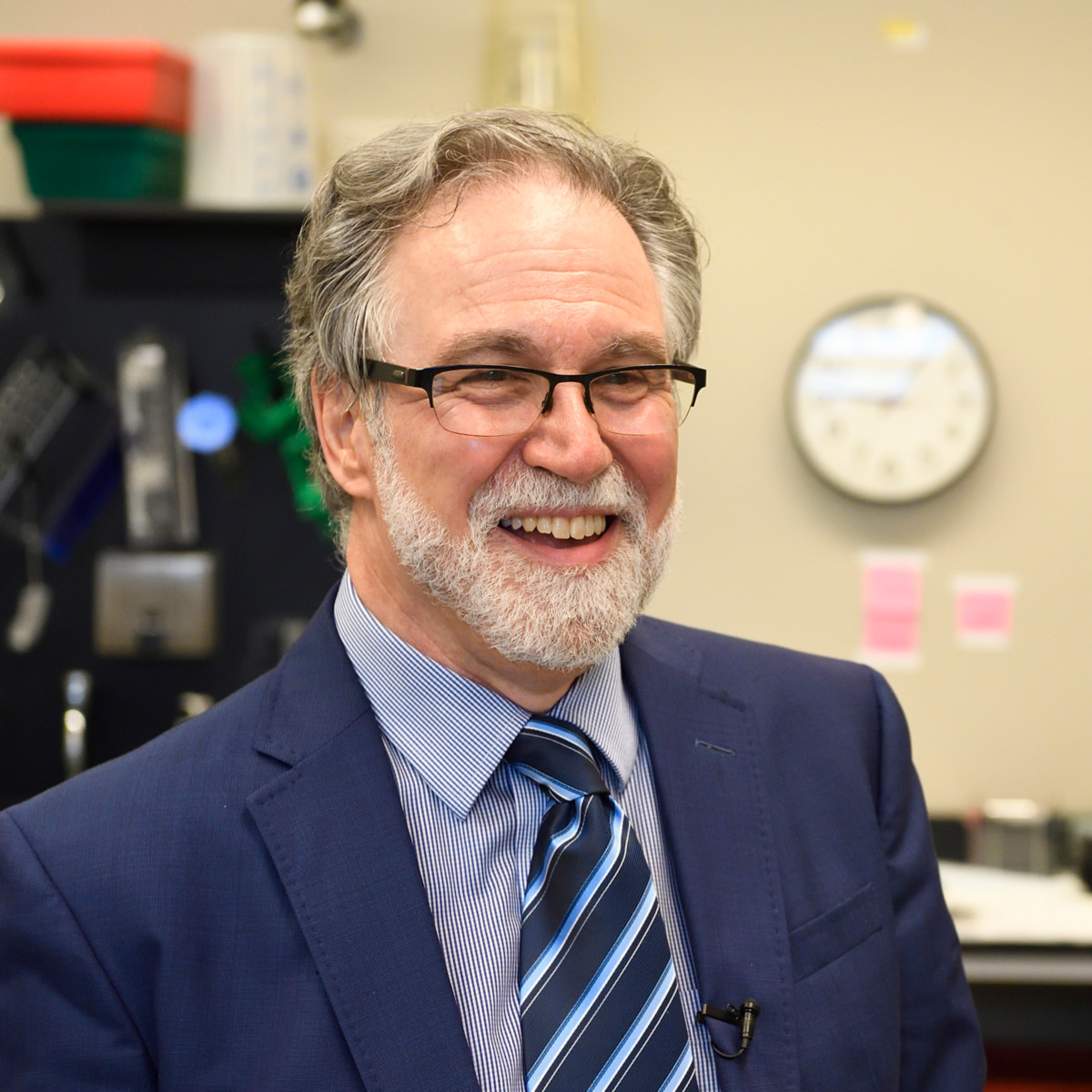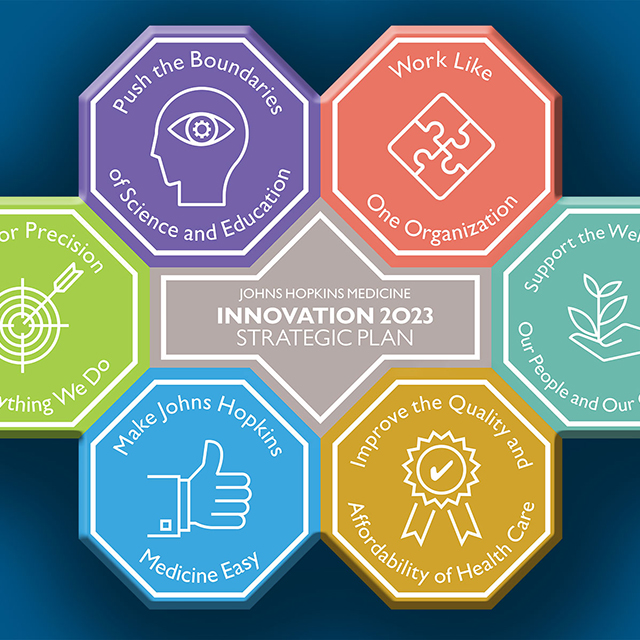The past year brought many moments of progress and pride for Johns Hopkins Medicine (JHM), including the awarding of the 2019 Nobel Prize in Physiology or Medicine to school of medicine professor and researcher Gregg Semenza. During the Oct. 21 “State of Johns Hopkins Medicine” presentation, Paul B. Rothman, dean of the medical faculty and CEO of Johns Hopkins Medicine, also spoke of Innovation 2023 — the five-year strategic plan — as a framework to highlight other achievements.
In case you did not attend the presentation or view the livestream, here are a few highlights. You can also view a recording of the entire presentation here.
- Supporting the well-being of our people: Because a happy, engaged and energized workforce is the backbone of the health system, Johns Hopkins is working to enhance joy at JHM. Last year, we began offering clinicians Dragon software to dictate their notes, so they can spend more time with patients. We are looking for ways to reduce the amount of time providers spend filling out electronic health records. We’re also working to make Epic easier to use. We have a program to send expert trainers to spend two weeks in our clinics, showing clinicians how to use Epic more efficiently. We are also creating a system to reduce the overload of email messages.
Through the Healthy at Hopkins program, we are addressing the number of employees who suffer from hypertension. In free blood pressure screenings offered to staff, nearly half of employees screened this year had hypertension — and 50% of those with hypertension were unaware of it. Johns Hopkins is committed to finding strategies, including stress management and nutrition education, to deal with this condition.
- Supporting the well-being of our communities: Johns Hopkins is working closely with community groups to fight the opioid epidemic by meeting users in their communities and on the streets; by treating addiction as a chronic illness, without stigma; by increasing the use of buprenorphine, which has several advantages over methadone; by helping recently released inmates who may have addiction problems; and by increasing access to syringe exchanges and HIV testing, which can reduce opioid users’ health risks.
We announced our collaboration with 10 city hospitals, Baltimore City government and Health Care for the Homeless to provide permanent housing and care for 200 individuals and families who are homeless or at risk of being homeless.
Sibley Memorial Hospital in Washington, D.C., has started a cancer program to help underserved patients in Washington who typically face barriers to getting cancer care.
- Making health care more accessible: Advancing the way we practice medicine means making medicine mobile. Johns Hopkins Home-Based Medicine (JHOME) is medical care specially catered to patients age 65 and over who have health conditions that do not allow them to travel easily to the hospital. Clinicians provide nonemergency home visits six to eight times a year.
- Achieving gender equity in medical education: Johns Hopkins has always supported the push for more women in medicine, and this year, the 2019 class of first-year medical students consists of 68 women and 50 men. Overall, 52% of students in the school of medicine are women.
- Expansion to increase care: The Howard County General Hospital campus and Suburban Hospital are expanding to provide greater access to medical care. Howard County General Hospital will add a 48,000-square-foot building to house an updated psychiatric unit and other services. Suburban Hospital will open a new intervention suite with 14 operating rooms and fully private patient rooms.
Suburban and All Children’s hospitals achieved Magnet status for the first time. They join The Johns Hopkins Hospital, which was awarded its fourth Magnet designation last year.
- Working like one organization: Johns Hopkins cardiologists and biomedical engineers have teamed up to tackle heart disease by creating new, innovative treatments through technology like 3D programs. The Alliance for Cardiovascular Diagnostic and Treatment Innovation, a collaboration between the school of medicine and the school of engineering, is developing ways to personalize treatment of arrhythmia and other heart conditions.
- Pushing the boundaries of science: The Johns Hopkins National Proton Center, located at Sibley Memorial Hospital, offers highly targeted cancer treatment for adults and pediatric patients. The new center, with experts from the Johns Hopkins Kimmel Cancer Center, uses a multidisciplinary approach and sophisticated imaging to deliver customized care.
Johns Hopkins has also opened the Center for Psychedelic and Consciousness Research — the first center of its kind in the United States. It will examine the therapeutic effects of hallucinogenic drugs on mental health issues like anxiety and depression.


